
How to Start Your Own Greenhouse
Last Updated: Apr 9, 2025Gardening with a greenhouse is incredibly empowering. That is until you start shopping for one. How do you choose between hoop houses and A-frames? Do you need glass, or will plastic do? How big a greenhouse do you really need? And what should you even grow in your new greenhouse?
Today we're taking a look at the many types of greenhouses available to hopefully help you zoom in on the best greenhouse for your home. You'll also learn about permitting requirements, whether you need a foundation and the best placement for your new greenhouse. Let's get started!
Table of Contents
- Types of Greenhouses
- What Is a Hoop House Greenhouse?
- What Is a Gothic Arch Greenhouse
- What Is a Geodesic Dome Greenhouse?
- What Is a A-Frame Greenhouse?
- What Is a Portable Greenhouse?
- Which Type of Greenhouse is Right for You?
- How to Build a Greenhouse: Kits and DIY
- Where Should You Place a Greenhouse?
- What Should You Grow in a Greenhouse?
- Can I Use a Greenhouse Year-Round?
- How Does Local Climate Affect What You Can Grow?
- Are You Ready to Start Your Own Greenhouse?

Types of Greenhouses
If you've already started your greenhouse search, you've probably realized there are a lot of options. Types of greenhouses range in size, shape, materials, and features. To alleviate choice overload, start by making a list of what you intend to use the greenhouse for. For example, would you like to use the greenhouse year-round or just for starting spring seeds?
It's also important to consider the height of plants you'd like to grow. In the Pacific Northwest, we can grow cocktail citrus trees, but they must be sheltered in winter. If you think you'd like to use your greenhouse for a taller plant, make sure you choose a tall greenhouse. You might also consider your need for hangers for hanging flower baskets and drying crops like onions and garlic.

Detached Greenhouses
Greenhouses fall into two main categories; detached and attached. Detached greenhouses stand separate from your home.

What Is a Hoop House Greenhouse?
Hoop houses are the cheapest and easiest greenhouses to build, making them an excellent first greenhouse. They also don't require a permit in most areas. The name "hoop house" comes from the greenhouse design, literally built from rounded hoops of aluminum or PVC pipes. The hoops are draped in either polyethylene film or panels, lasting about two to four years before being replaced.
The low sidewalls do limit interior headroom for taller plants but are a top choice for starting seeds. The rounded shape sheds snow and rain better than most greenhouse designs but can collapse in heavy snow and wind. For this reason, hoop houses aren't ideal for year-round use in snowy climates. You may also need to run a blower in the greenhouse to keep it adequately insulated on cold days.

What Is a Gothic Arch Greenhouse
The gothic arch greenhouse is a variation of the above hoop house with a defined peak at the top rather than perfectly rounded. This design creates a steeper roof to shed snow and rain better. Like the hoop house, gothic arch greenhouses provide excellent lighting with a spacious interior for plants. They are usually framed in PVC, aluminum, or wood and draped in polyethylene film or fitted panels. The panel design allows for the addition of vents and windows to improve ventilation, but you may still need to use a heater on cold days.
Gothic arch greenhouses are also usually built on a foundation, requiring a building permit and subject to additional property taxes.

What Is a Geodesic Dome Greenhouse?
Geodesic dome greenhouses stand out from other greenhouses with their stunning dome shape. The shape provides exceptional lighting for plants but also limits the internal space, especially near the edges. The dome greenhouse sheds snow and rain well and can be built with sturdy steel or wood frames to withstand harsh weather. These greenhouses do require a foundation and can be draped in polyethylene film or fitted panels. If you're looking for a greenhouse you'll enjoy lounging in, and the geodesic dome is a plant lover's paradise. Just imagine sitting in a comfortable chair surrounded by exotic tropical flowers!
What Is a A-Frame Greenhouse?
The A-frame greenhouse is arguably one of the most picturesque options for hobby gardeners and suburban homeowners. These compact greenhouses can be built in a variety of sizes for seed starting and year-round use. A-frame greenhouses are usually framed in aluminum, steel, or wood and covered with glass or polycarbonate panels. Like those by Palram, easy-to-build A-frame greenhouse kits often include vents, locking doors, and even rain gutters.
These sturdy greenhouses can withstand snow and wind, especially when built on a foundation and securely tied down. A greenhouse heater can quickly transform an A-frame greenhouse into a relaxing outdoor space for reading, playing music, or napping amongst your plants in cooler climates. Just imagine cozying up with a good book, surrounded by fragrant herbs and flowers, on a bitterly cold day.

What Is a Portable Greenhouse?
If you live in an apartment, condo, flat, or don't need a lot of space, a portable greenhouse might be the perfect fit. These popup greenhouses contain just a few shelves, safely zipped into a plastic covering for easy seed starting or plant care. When portable greenhouses are stacked vertically, plants can quickly be closed in for cold nights while also getting plenty of sun during the day. The greenhouse covering can also be removed, resulting in a beautiful shelf of greenery.
Portable greenhouses are inexpensive and don't require a permit. However, be sure to check your Home Owners Association (HOA) or rental contract to ensure these cute little greenhouses are allowed on your deck or balcony.

Attached Greenhouses
If you'd rather keep your greenhouse closer to home, an attached greenhouse might be just the ticket. Also known as lean-to greenhouses, these little greenhouses are built right onto an exterior wall of your house, shed, barn, or garage. These greenhouses provide all the benefits of a detached greenhouse, but also provide extra insulation to the structure they're built onto. Planned right, a lean-to greenhouse can improve your home's energy efficiency while providing a warm space to grow plants and enjoy your morning coffee.
When building a lean-to greenhouse, you must plan the placement to ensure it gets plenty of sunshine. If a greenhouse is built on the wrong side of your home, it may be too shady to be productive. For this reason, builders recommend lean-to greenhouses be added to the south side of a structure.
Lean-to greenhouses are built with a roof that angles away from the structure for safe snow and rain shedding, but do require a building permit and may increase your property taxes.
Which Type of Greenhouse is Right for You?
Every gardener has different greenhouse needs. Some may only need the greenhouse in the spring to start vegetable plants from seed, while others may need one for tropical flowers year-round. Consider the following questions:
- How big is your yard?
- What do you plan to grow?
- How many plants are you planning to grow?
- Do you have HOA restrictions?
- Do you get lots of snow or wind?
- Do you plan to use it year-round?
How to Build a Greenhouse: Kits and DIY
Now that you know which type of greenhouse you prefer, it's time to decide how to build it! You can either build your greenhouse from scratch or buy a kit complete with all the pieces and assembly instructions.

Greenhouse Kits
Greenhouse kits are available in different styles and sizes to fit any gardening need. They also come with everything you'll need to build it, aside from the foundation. You might consider a small portable greenhouse, like those by OGrow, or a larger A-frame like Palram.
Whatever you choose, be sure to buy your greenhouse kit from a reputable manufacturer. This will ensure that it comes with easy-to-follow building instructions, a warranty, and the option to order replacement parts should one fail down the road.
While you await the delivery of your greenhouse kit, determine whether you'll build it onto a foundation. If so, you may need to acquire a building permit first. To create a strong foundation, start by leveling the ground. Next, build a frame for the greenhouse to sit on top of and fill the center with gravel, brick, stone, or concrete.
Once the foundation is ready, you can build the greenhouse kit right on top. Don't forget to finish it by securing the greenhouse to the foundation.

DIY Greenhouses
Since greenhouse kits still require quite a bit of building, many homeowners opt to build one from scratch. Doing so allows for the use of previously deconstructed materials and a custom style and size. Hoop houses are among the most popular DIY greenhouses as they're quick and easy to erect.
Before starting your DIY greenhouse, be sure to draw up a plan to ensure you have sufficient materials. Accurate measurements will help you make confident cuts, resulting in a sturdy and robust greenhouse.
Gardening & Outdoor
Shop the best high-performing gardening and outdoor products that impact your health, wealth, and the planet through their use.
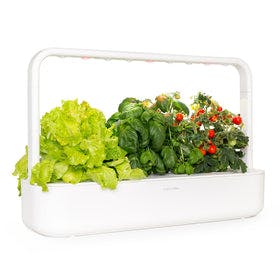
Click & Grow Smart Garden 9
Click & Grow
In Stock
3 Colors
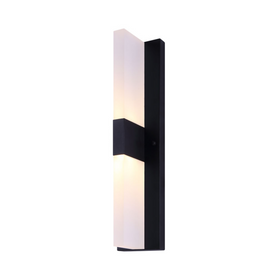
Canarm CORIN LED Black Outdoor Light
Canarm
Out of Stock
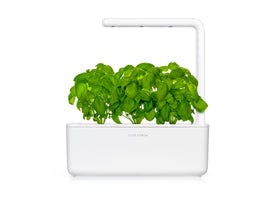
Click & Grow Smart Garden 3
Click & Grow
In Stock
3 Colors
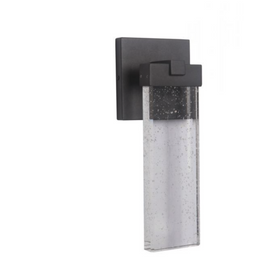
Craftmade Aria Outdoor LED Wall Mount Light
Craftmade
In Stock
2 Colors
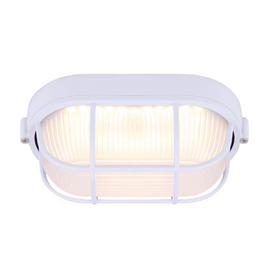
Canarm LOL386WH White LED Outdoor Sconce
Canarm
In Stock
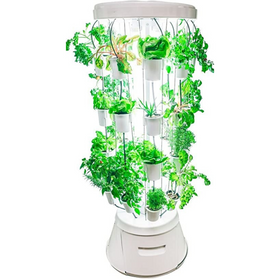
Nutritower Vertical Hydroponic Indoor Garden
Nutritower
Out of Stock
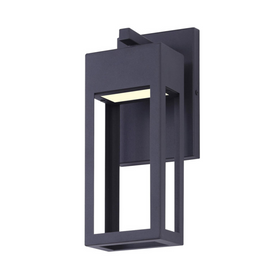
Canarm FAE LED Black Outdoor Light
Canarm
In Stock
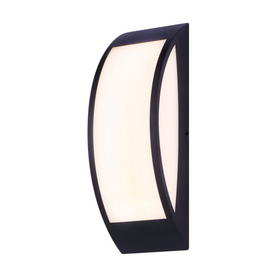
Canarm BARDO LED Black Outdoor Light
Canarm
In Stock
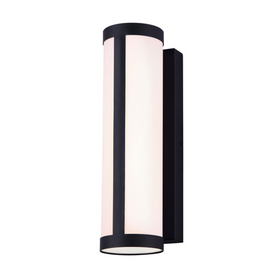
Canarm SINDRI LED Black Outdoor Light
Canarm
In Stock
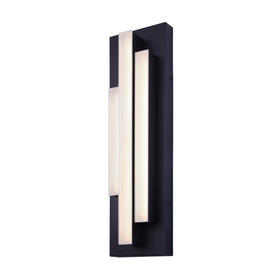
Canarm LOKI LED Black Outdoor Light
Canarm
In Stock
Where Should You Place a Greenhouse?
The single most crucial aspect of any greenhouse is its placement on your property. Greenhouses should be built in full sun for optimal plant growth. Be sure to build it clear of trees to prevent shade, damage, and leaves from piling up. If you're unsure of the proper placement in your yard, spend a few weeks tracking how the sun moves around your home. Remember, the sun's position changes by season, so a space that's sunny now might not be in a few months.
You'll also want to consider the greenhouse's proximity to your home and garden. A greenhouse built close to your garden beds will make transplanting vegetable starts much easier. If you plan to use your greenhouse year-round to grow cut flowers, citrus, or herbs, you might want to keep it closer to your home. A greenhouse built too far away may not get watered or weeded often enough.

Can I Use a Greenhouse Year-Round?
Yes, greenhouses can extend the gardening season for homeowners in the north, making it possible to grow things like tomatoes, lemons, and flowers year-round. Greenhouses also make a wonderful space to relax and wash those winter blues away. You might leave space for a cozy Papasan chair, a bistro table, or funky garden art you pick up on your travels.
If you plan to use your greenhouse year-round, be sure you build it strong enough to withstand the weather. You may also need to add fans, vents, and heaters to keep the interior climate right for your plants.
How Does Local Climate Affect What You Can Grow?
Your local climate determines what will grow well in your garden, but a greenhouse makes it possible to grow more. For example, homeowners in the Great White North often have trouble growing tomatoes as nighttime temperatures drop too low. These gardeners might keep their tomato plants in a greenhouse to keep them warm at night for juicer tomatoes and a bigger harvest.
Laura Bourland
Laura grew up in the California suburbs, far removed from environmentalism, but nature always has a way. She uprooted her life in 2015, moving to the countryside of Washington to live a more sustainable and simple life on 12 acres. She and her fiancee are learning on the job as they attempt everything from gardening and natural pest control to eco-friendly building and home improvement.


